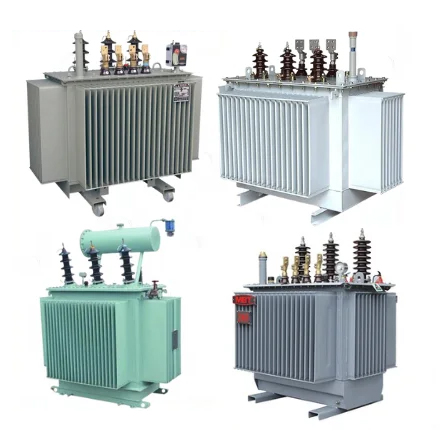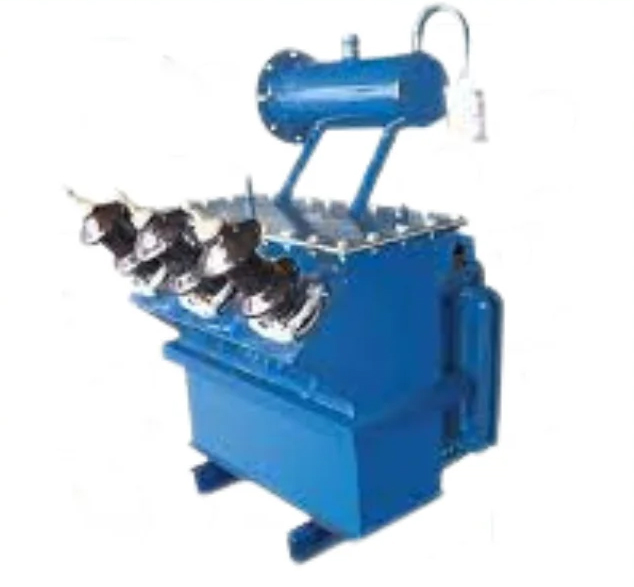- +91 7428455630
- bharatindustries2008@gmail.com
- Unit 1: Plot No 40, Udhyog Kendra II, Ecotech III, Greater Noida-201306
The modern world runs on electricity, and at the heart of this vast power distribution infrastructure lies the humble yet crucial distribution transformer. From large industrial complexes to small household appliances, we depend on a steady supply of power for lighting, heating, computing, communication, transportation, and innumerable other applications.
Though often overlooked, the distribution transformer plays a vital role in ensuring that the electricity we use reaches our homes and businesses safely and efficiently. In this blog post, we will discuss about distribution transformers, their types, unique features, and the various applications they serve in our power-driven world.

A distribution transformer is a type of transformer that reduces high-voltage electricity from power stations down to lower levels suitable for distribution to end-use residential, commercial and industrial customers. It essentially acts as the critical link between the high-voltage transmission network and the low-voltage distribution network in the power system.
Distribution transformers come in various standard sizes and power ratings to match different distribution voltage levels as well as load demands. They are usually installed on utility poles, ground pads or underground vaults near the area being served. Based on several phases, there are mainly two types:
Ideal for lower capacity applications like residential complexes, commercial buildings etc. Common ratings are 10 kVA, 25 kVA, 63kVA.
Used for higher capacities in industrial setups, large residential complexes etc. Some common ratings for three-phase distribution transformers are 25kVA, 40kVA, 63kVA, 100kVA, 160kVA, 200kVA, 315kVA, 500kVA etc.

This small-capacity transformer is ideal for small commercial establishments like shops, clinics, schools, restaurants, and small offices, as well as low-rise residential buildings. It can adequately meet the modest power demands from lighting, heating, ventilation, computing etc.
This medium-capacity transformer is widely used in apartment blocks, commercial complexes housing multiple shops and offices, small hotels, medium factories and industrial units. It can supply power for lighting, motors, machinery, lifts, pumps etc.
This common rating can supply electricity to large residential apartments, clusters of shops and commercial establishments, medium-scale production units, and small industrial plants for operating machinery, motors, heating equipment, lighting etc.
With its high capacity, this model is suitable for large commercial buildings like malls, IT parks, and luxury hotels as well as medium-scale heavy industries having high wattage motors and heating loads.
Mainly utilised in large gated residential communities, office campuses, shopping centres, and industrial plants running production lines with many high-rating electric devices and motors. Meets fairly heavy loads efficiently.
Typically used to power loads in energy-intensive commercial complexes with large computing facilities or industrial units with production machinery, high-capacity heating or welding equipment that require stable high-capacity power feed.
Can supply stable quality power to heavy electrical loads in large factories, mills, mineral processing plants running very heavy motor drives, high capacity industrial furnaces, metal cutting/compression machines etc.
Suitable for supplying power to large commercial facilities like shopping malls, data centres, and chain hotels which have high load demands from air-conditioning, lighting, elevators and computing equipment.
Reliably meets the heavy usage needs of industrial plants operating several production lines, metal processing machinery, large heating furnaces, and other equipment requiring high electrical loads.
Modern distribution transformers incorporate some salient features that make them suitable for the demanding requirements of power distribution:
1. High efficiency: Careful design optimization ensures very low losses during energy transfer resulting in high efficiency of over 97%. This keeps electricity costs low by reducing wastage.
2. Reliability: Stringent quality control in design, raw materials and manufacturing results in highly reliable units that provide trouble-free service for over 25 years.
3. Overload capability: Short-term overloading above the rated capacity is supported to account for occasional spikes in demand.
4. Protection features: Inbuilt devices protect the transformer from issues like overheating, voltage spikes, short circuits etc.
5. Minimal maintenance: Robust sealed tanks with long-life insulating oil minimize maintenance requirements.
6. Compact footprint: Pole-mounted transformers utilize minimal ground space.
7. Low environmental impact: Distribution transformers utilize non-toxic, biodegradable vegetable-based oil instead of mineral oils.
Distribution transformers have some key applications in power systems:
With such wide-ranging critical applications, distribution transformers need to meet stringent design and quality control parameters. The manufacturer undertakes rigorous testing to international standards to ensure:
Adhering to such testing and QA regimes results in units that offer years of trouble-free service.